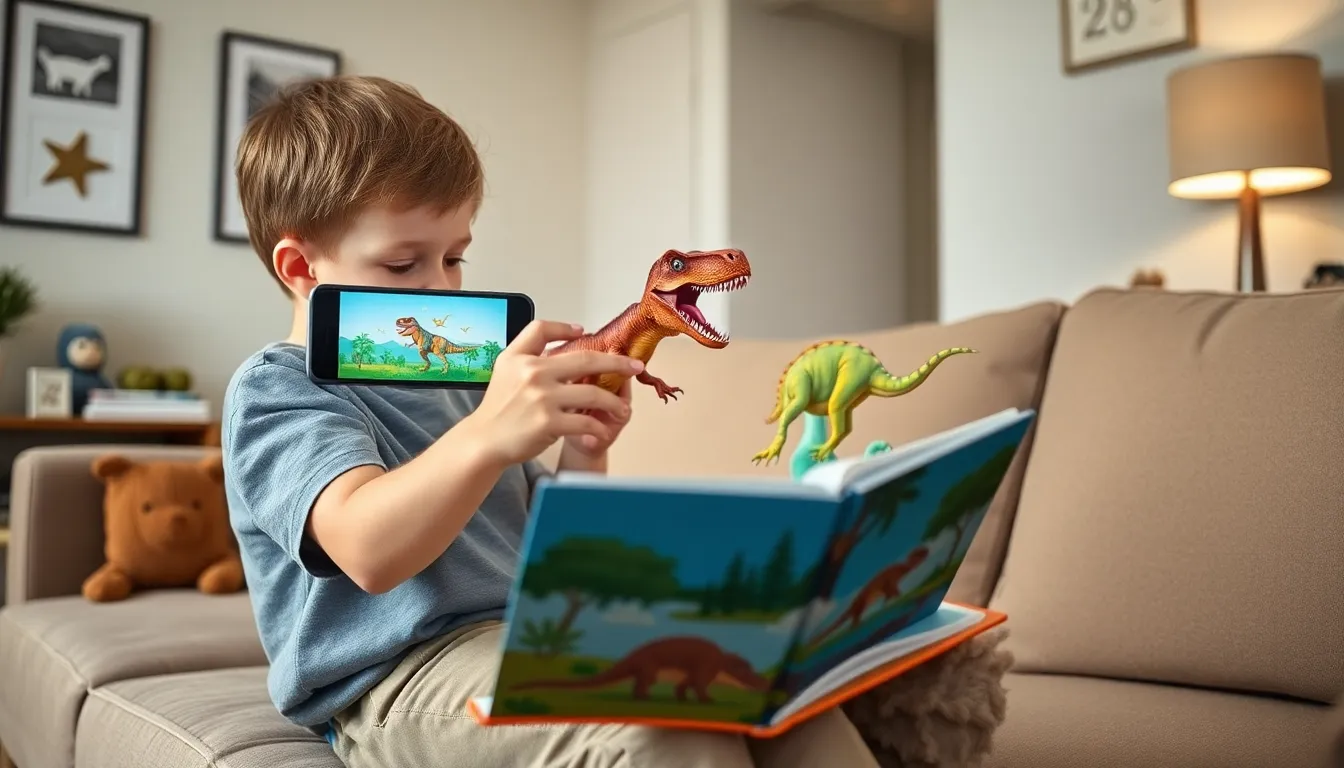Imagine flipping open a book and watching characters leap off the pages, interact with you, or even guide you on thrilling adventures. Sounds like something from a sci-fi movie, right? Well, welcome to the world of augmented reality (AR) books, where the lines between literature and technology beautifully blur. In this exciting era, reading is not just about turning pages: it’s about immersing yourself in a digital-enhanced narrative that engages all your senses. Buckle up, as we jump into the intriguing universe of augmented reality in literature.
Table of Contents
ToggleWhat Is Augmented Reality in Books?

Augmented reality in books is a groundbreaking integration of digital content with the physical pages we know and love. Instead of merely reading a story, AR allows readers to experience it. For instance, when you point your smartphone at an illustration, captivating animations or sounds might spring to life. This interactive experience takes storytelling to an entirely new level. Readers don’t just visualize scenes: they are part of them. Picture a child pointing a device at a dinosaur book and suddenly seeing a roaring T-Rex stomp across their living room. Unlike traditional books, augmented reality creates an immersive encounter, melding text, graphics, and digital media seamlessly.
The Technology Behind Augmented Reality Books
At the core of augmented reality books is a blend of hardware and software. Devices like smartphones or tablets equipped with cameras are essential for this technology to function. These devices recognize images or patterns on the book pages and overlay digital content. Apps designed for AR books act as the bridge, layering animations, audio, and interactive elements on top of the physical book content. Technologies such as computer vision, gesture recognition, and 3D modeling play significant roles in ensuring that the digital enhancements react appropriately as readers turn pages or shift their views. Thanks to advancements in AR technology, creators are continuously enhancing the depth and realism of this experience.
Benefits of Augmented Reality Books
Augmented reality books offer a myriad of advantages that traditional reading simply can’t match. Firstly, they foster enhanced engagement. Readers can interact with characters, explore settings, and even take quizzes related to the story, turning passive reading into an active experience. Secondly, these books cater to a diverse learning style. Visual learners can benefit from the vivid graphics and animations, while auditory learners can enjoy the accompanying soundscapes. Also, AR books can boost retention rates. A study conducted by educators found that students who utilized augmented books scored higher in comprehension tests compared to their peers using standard textbooks. Finally, they spark curiosity. The novelty of AR captivates young minds, making them eager to explore, and eventually, read more.
Popular Augmented Reality Books to Explore
Several authors and publishers have embraced augmented reality, breathing new life into storytelling. For example, The Night Sky by A. K. Smith not only narrates cosmic tales but allows readers to explore constellations through their devices. Similarly, The Fantastic Flying Books of Mr. Morris Lessmore merges a beautiful story with interactive animations, bringing the protagonist’s literary world to life. AR Books tailored for education, like the Science AR series, engage students with interactive experiments and visual enhancements, making complicated concepts easier to grasp. These examples illustrate the broad spectrum of AR offerings, designed to cater to various age groups and interests.
How Augmented Reality Enhances Learning and Engagement
The synergy of augmented reality and books can transform how knowledge is imparted. In educational settings, AR books can make subjects like history, science, and geography come alive. Imagine reading about ancient civilizations while simultaneously viewing 3D models of iconic architecture. Engagement levels spike as students can visualize concepts in ways textbooks alone cannot provide. Plus, incorporating gamification elements, such as quizzes and challenges interwoven into the text, turns learning into a fun and interactive quest rather than a mundane task. The practical applications of AR encourage exploration and inquiry, allowing readers to dive deeper into subjects they may otherwise find uninteresting.
The Future of Augmented Reality in Literature
Looking ahead, the future of augmented reality in literature appears extremely bright. As technology continues to advance, one can anticipate more realistic and complex integrations of AR in books. Imagine novels that adjust their narratives based on reader interactions or educational materials that evolve as a student progresses through a curriculum. Besides, the rise of virtual reality may blend with AR, pushing the boundaries of storytelling. Authors might harness these powerful tools to enhance their narratives, creating multi-dimensional characters and dynamic plots that require reader participation. The horizon holds astonishing possibilities for how stories will be told and experienced in decades to come.
Challenges and Considerations for Augmented Reality Books
Even though the many benefits, augmented reality books face a few challenges. Accessibility is significant: not every reader has access to the latest technology required to fully appreciate these enhancements. The learning curve associated with using AR apps can also deter some readers, especially older adults who may prefer traditional reading. Also, there’s the risk of overstimulation: too many animations or sounds could detract from the storytelling itself. Besides, durability is a concern: augmented reality features require well-designed and thoughtful integration to ensure they don’t overshadow the physical narrative. Balancing technology with storytelling is essential in crafting a successful augmented reading experience.



